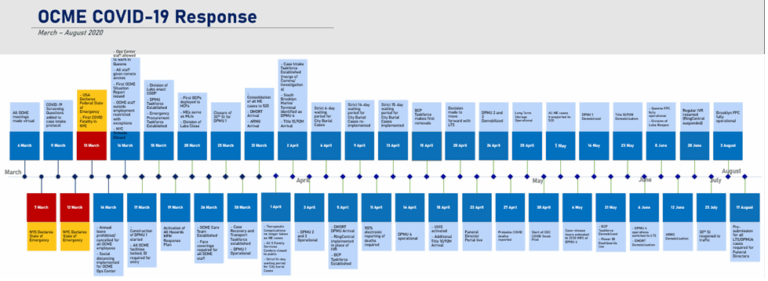Emergency Decedent Operations During COVID-19
Logistical Management of COVID-19 Decedents in New York City: How ArvataLogix supported The City of New York Office of Chief Medical Examiner
The COVID-19 pandemic posed extraordinary challenges for cities across the globe, particularly in managing mass fatalities with dignity and efficiency. In New York City, one of the earliest epicenters of the pandemic, the Office of Chief Medical Examiner (OCME) was confronted with an overwhelming increase in the number of deceased individuals. In response, ArvataLogix, dba Lious Thinking, a small business that specializes in logistical support and emergency operations, served as the prime contractor for a critical mission: the construction, operation, and maintenance of emergency decedent storage infrastructure.
Background
In early 2020, New York City became one of the first major epicenters of the COVID-19 pandemic in the United States. By mid-March, the number of infections surged rapidly due to the city’s dense population and global connectivity. Hospitals became overwhelmed, and the death toll escalated sharply. The demand on city services, including the Office of Chief Medical Examiner (OCME), quickly exceeded normal operational capacity. This unprecedented strain required immediate deployment of emergency response measures, including the establishment of temporary morgue facilities and long-term decedent storage infrastructure.
ArvataLogix was brought in as a prime contractor to support OCME’s efforts, contributing critical logistical, operational, and technical support during the most accurate phase of the public health crisis.
Response Timeline

Scope of Work
ArvataLogix was tasked with full logistical and operational support services including:
Infrastructure Establishment
- Setup and operation of four Disaster Portable Morgue Units (DPMUs) and one Long-Term Storage Unit (LTS).
- Deployment and management of 60 refrigerated trailers (reefers) and 84 refrigerated shipping containers for decedent storage.
- Construction of auxiliary infrastructure: disaster portable morgue units, receiving platforms, tent enclosures, mobile sanitation units, fencing, overhead weather protection, and concealment barriers to protect the privacy of operations.
Logistic Coordination
- Development and implementation of traffic and parking plans, in partnership with NYPD and local security teams.
- Continuous support of MHE operations, including forklifts and man lifts.
- Real-time equipment maintenance, power generation and fuel logistics for reefers.
- Staffing of Safety Officers, Operations Branch Managers, and specialized logistics personnel across all boroughs.
Warehouse and Asset Management
- Management of two large warehouse facilities: 25,000 sq. ft. in Manhattan and 200,000 sq. ft. in Brooklyn.
- Real-time radio-frequency identification (RFID) and bluetooth low energy (BLE) asset tracking system to monitor and manage thousands of critical items:
- 144+ refrigerated containers
- 5,000+ coffins and various types of body bags
- Inventory and management of personal protective equipment, OCME medical devices and equipment
- Fleet management of supporting vehicles and MHE
Distribution and Recovery Operations
- City-wide transportation and delivery of essential assets and personal protective equipment.
- Pickup and safeguarding of OCME property.
Support for FDNY Incident Management, Military logistics teams, and HHS Disaster Mortuary Operational Response Team (DMORT).
Challenges encountered
Scale and Speed
Responding to a historic surge in fatalities demanded rapid mobilization, often within hours, across multiple sites and jurisdictions.
Interagency Collaboration
Coordination between city, state, and federal agencies (including military and emergency teams) required adaptive communication and leadership.
Ethical and Emotional Complexity
Staff worked under emotionally intense conditions to ensure respectful handling of decedents and provided critical support to families indirectly through this care.
Operational Continuity in Crisis
Maintaining power, refrigeration, sanitation, and safety under high-demand and hazardous conditions required resilient planning and 24/7 support.
key takeaways for small businesses in crisis logistics
Build for Scalability
ArvataLogix’s ability to scale operations quickly was made possible by pre-existing capabilities in modular logistics, fleet management, and infrastructure deployment.
Develop Integrated Systems
RFID with BLE and real-time tracking enhanced transparency, accountability, and efficiency, even during the height of the crisis. Technology served as a force multiplier.
Prioritize Workforce Readiness
Pre-trained, cross-functional teams were crucial for safe, rapid deployment. Clear chain-of-command and job roles prevented bottlenecks.
Prepare for Emotional Resilience
Small businesses must build mental health support and resilience strategies into their emergency response culture, especially when handling mass fatalities.
Understand Intergovernmental Operations
Navigating municipal, state, and federal agencies required bureaucratic literacy and relationship management to ensure swift approvals and alignment.
results
ArvataLogix’s work with the NYC OCME is a testament to the pivotal role small businesses can play in national emergency responses. With agility, professionalism, and a deeply human-centered approach, ArvataLogix helped New York City navigate the most tragic phase of the pandemic while preserving the dignity of the deceased and supporting their loved ones from behind the scenes.
This case study serves as both a blueprint and a call to action for other small businesses: with the right preparation, systems, and heart, even the most daunting logistical challenges can be met head-on.
Get in Touch
Have a question or want to learn more about working ArvataLogix? Reach out and a member of our team will follow up with shortly.

